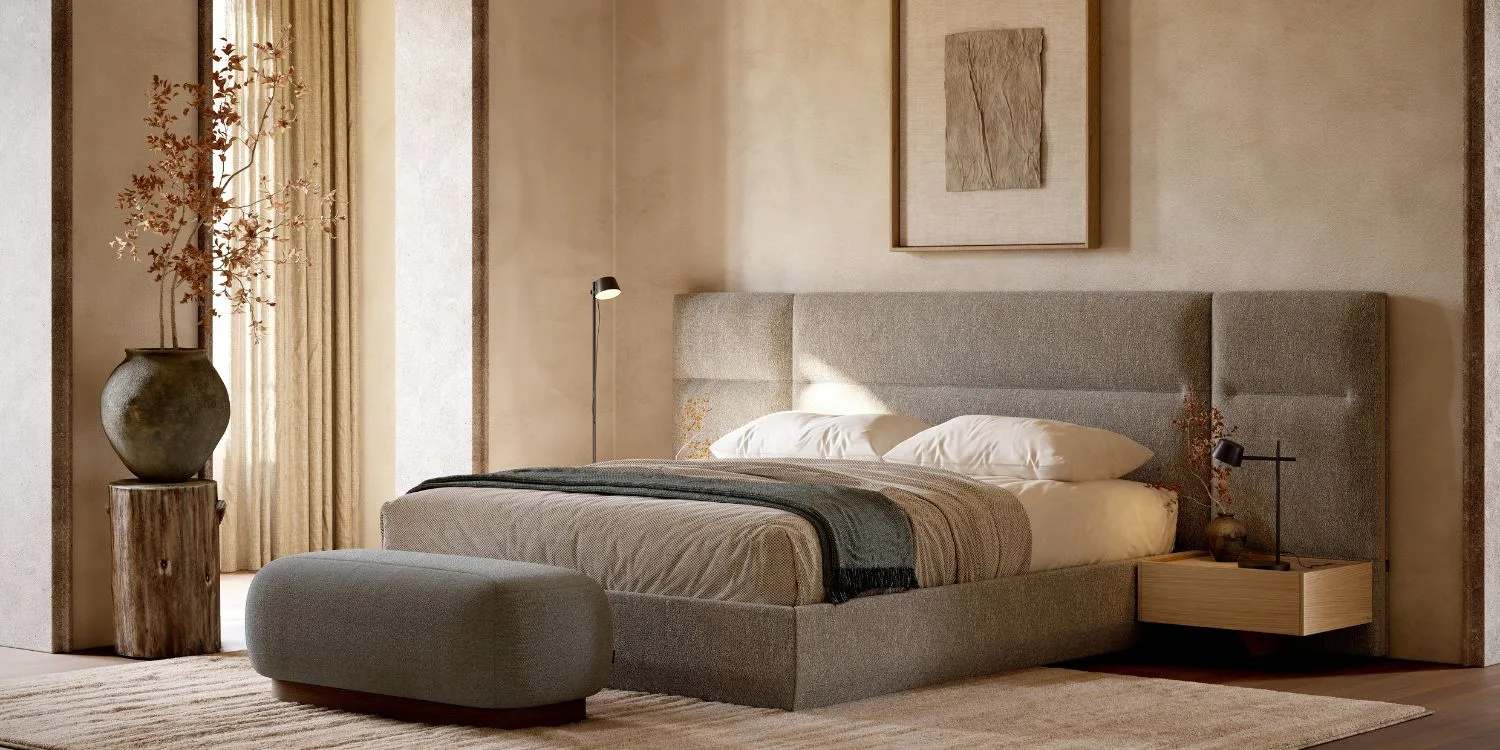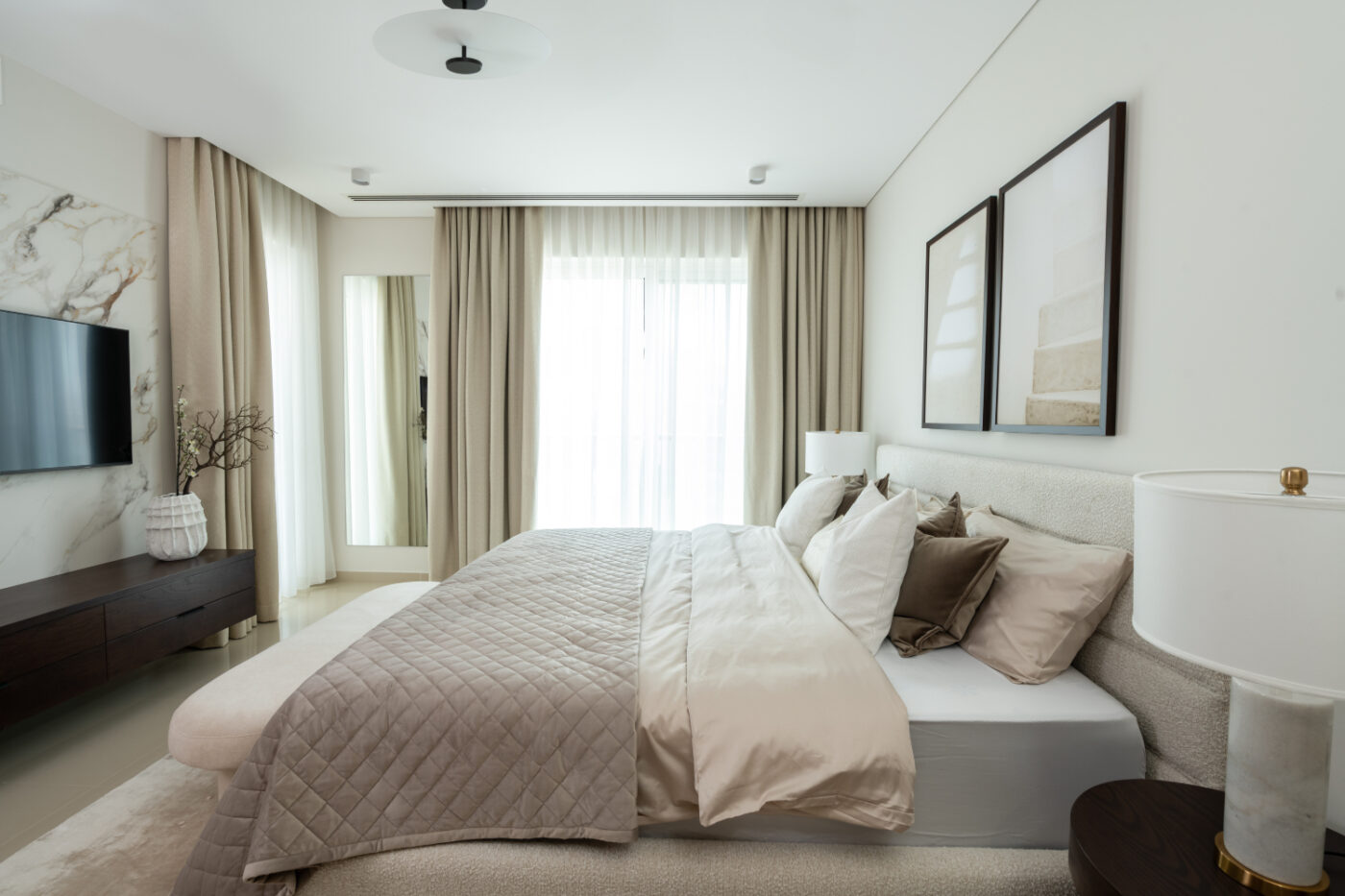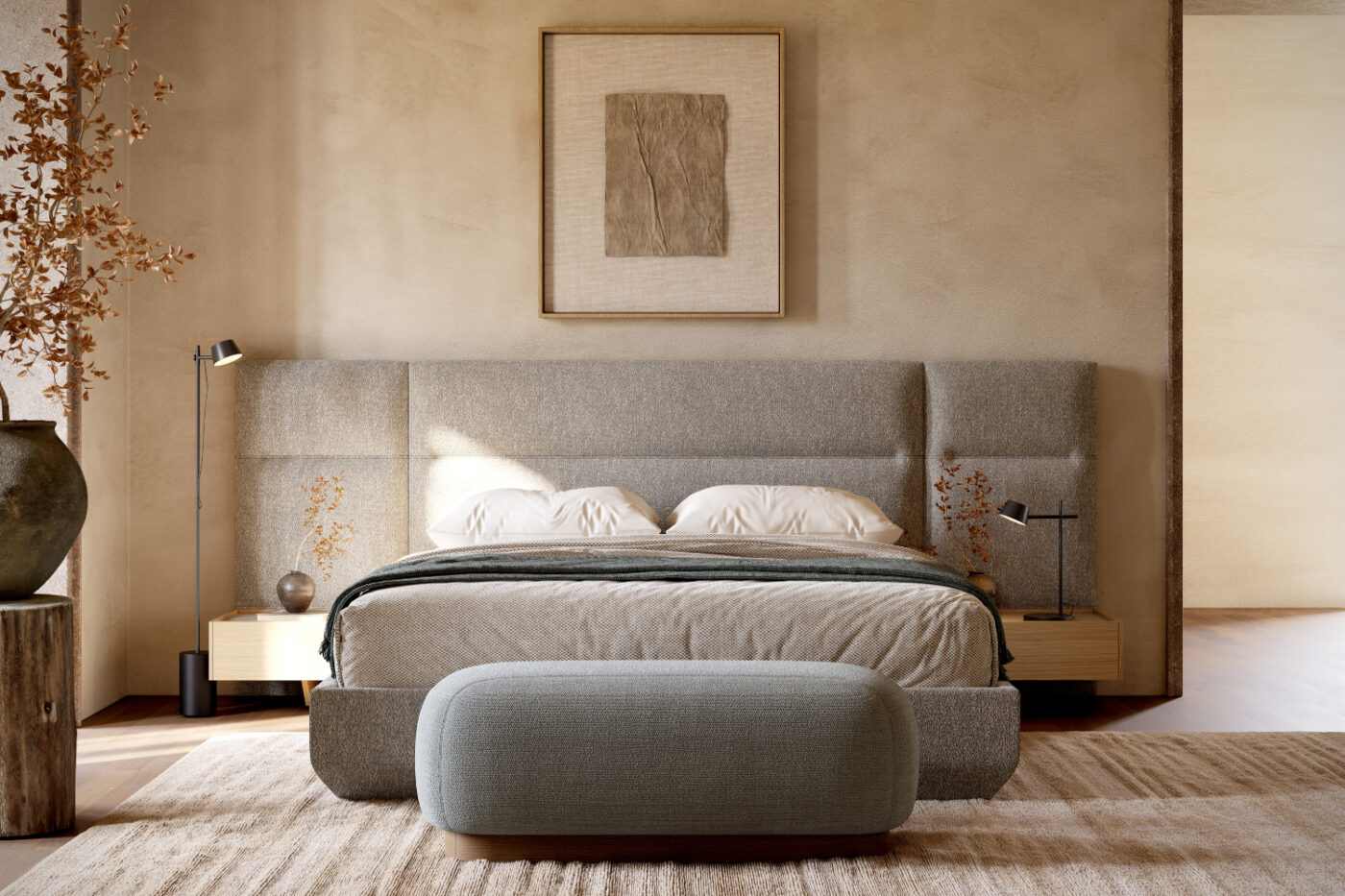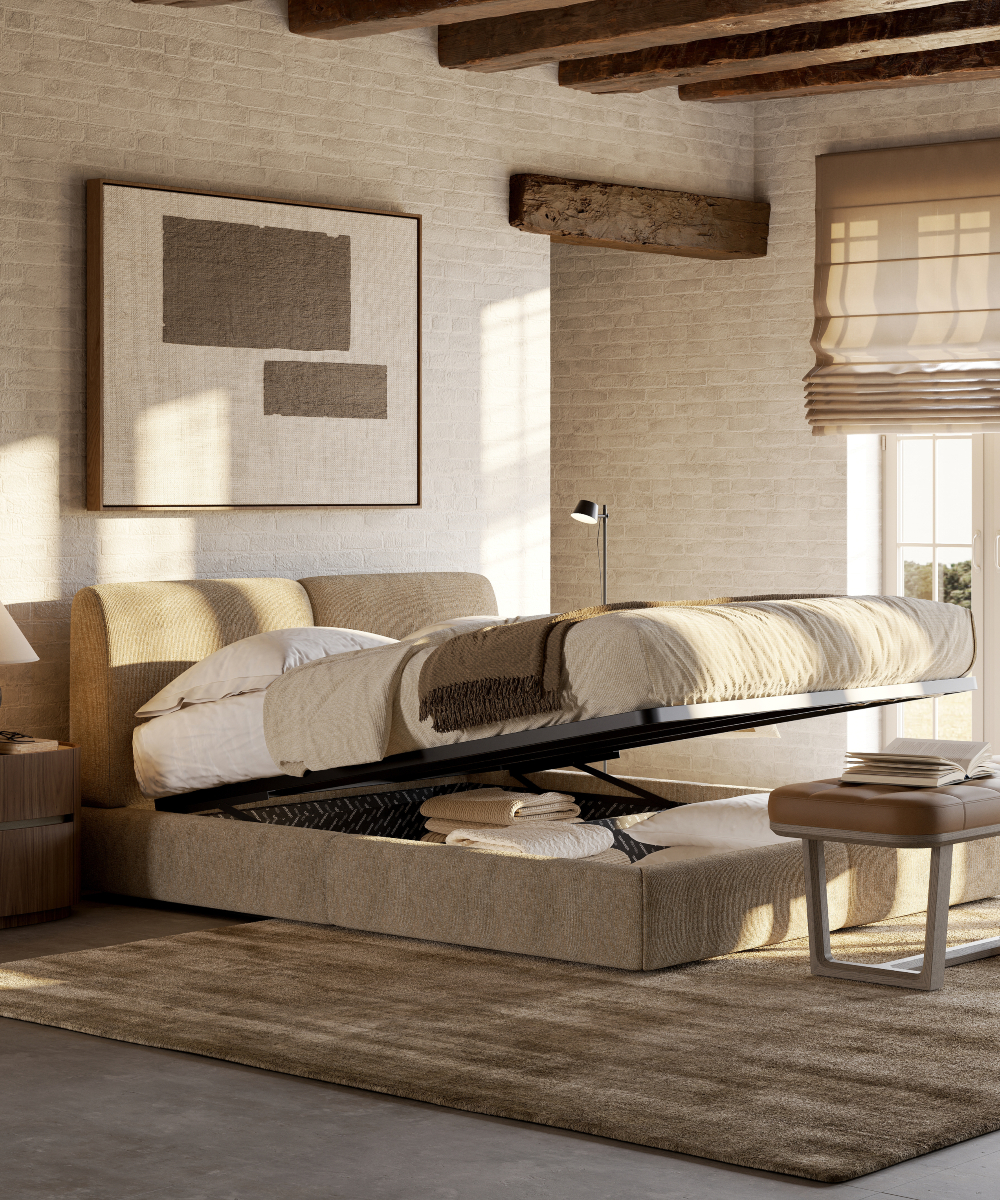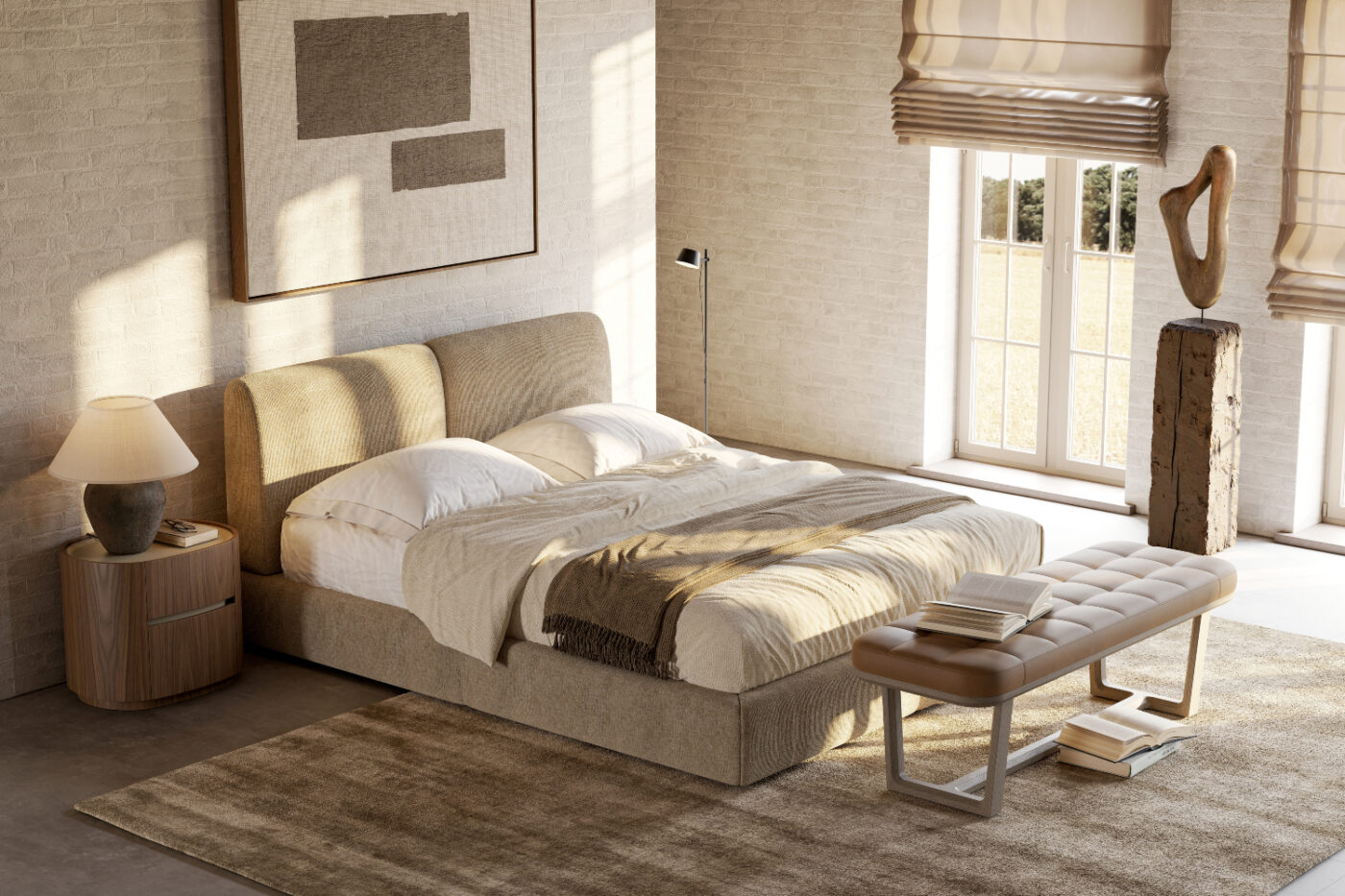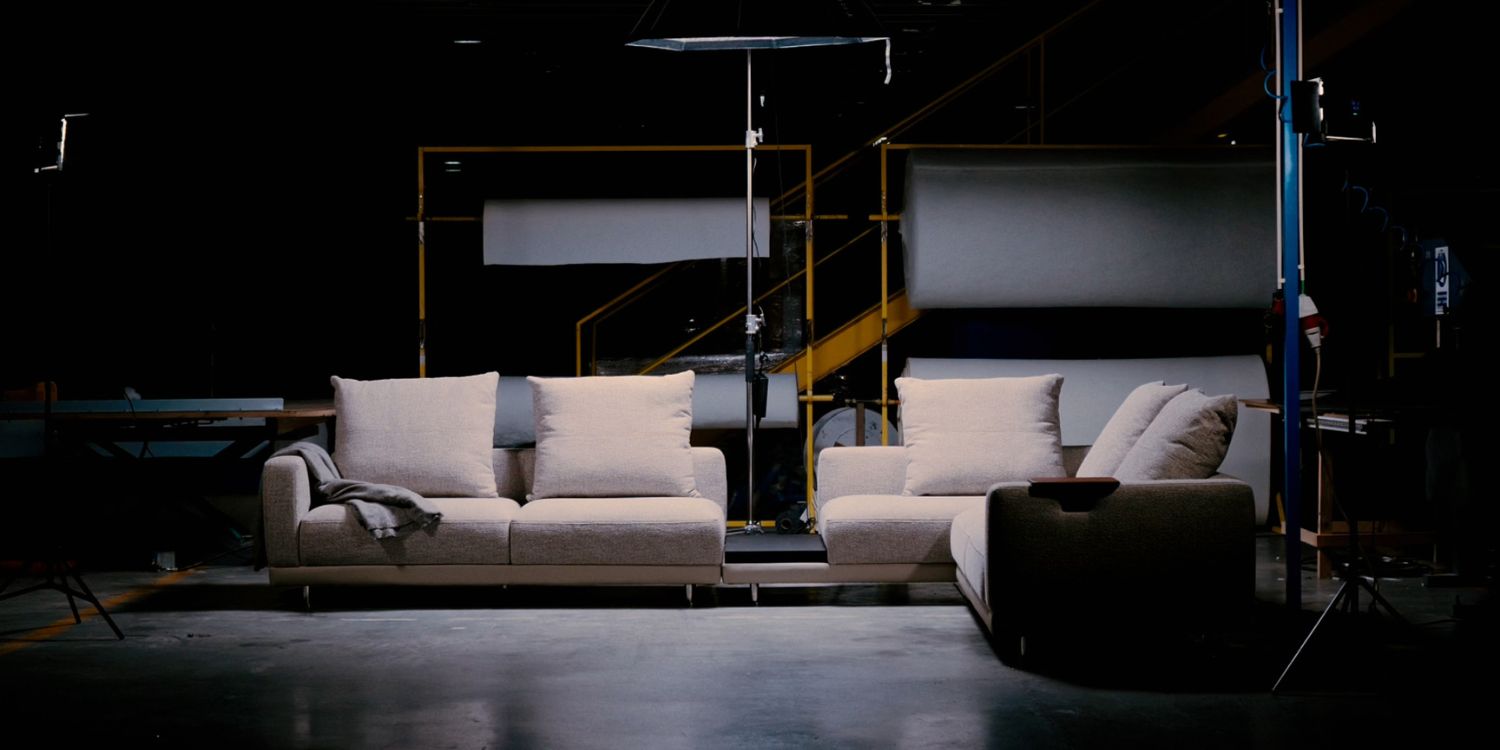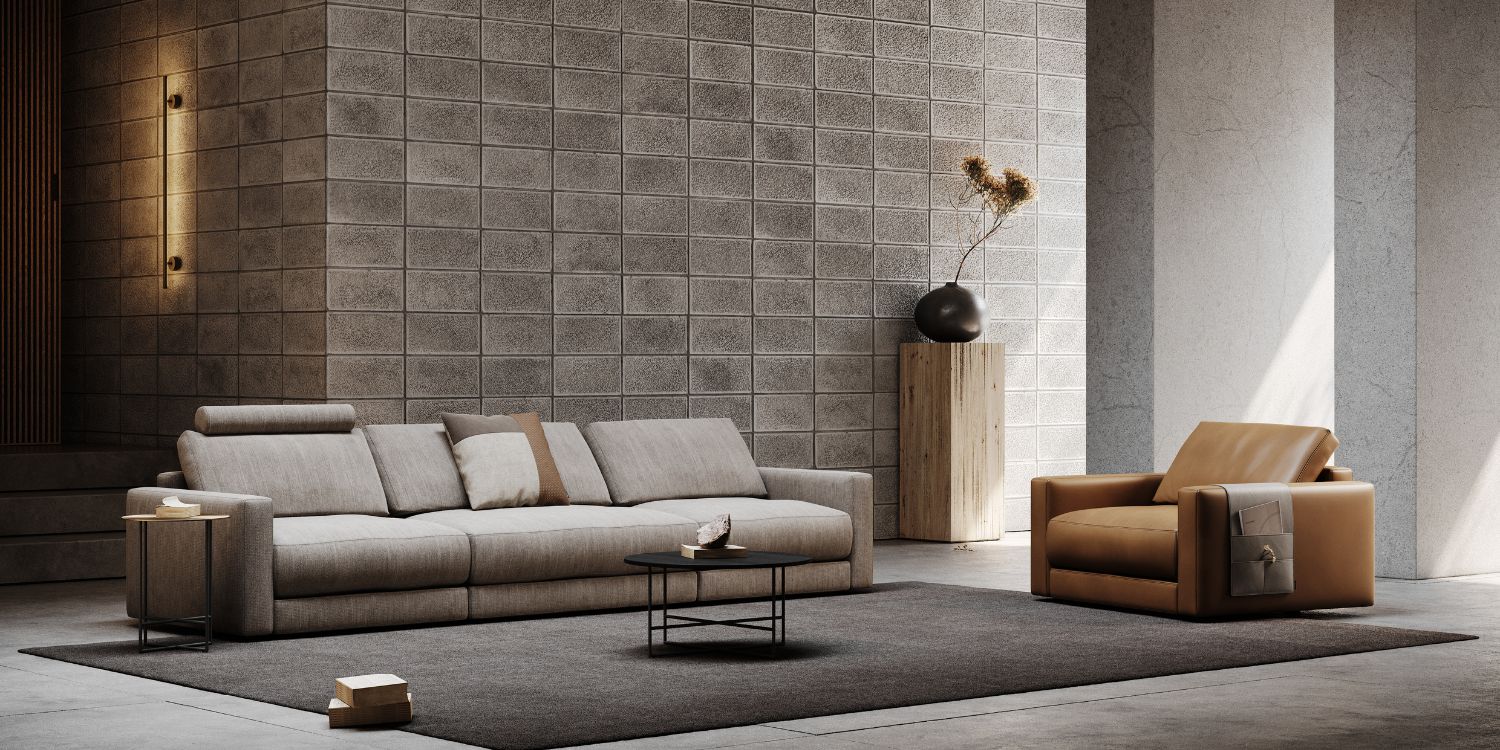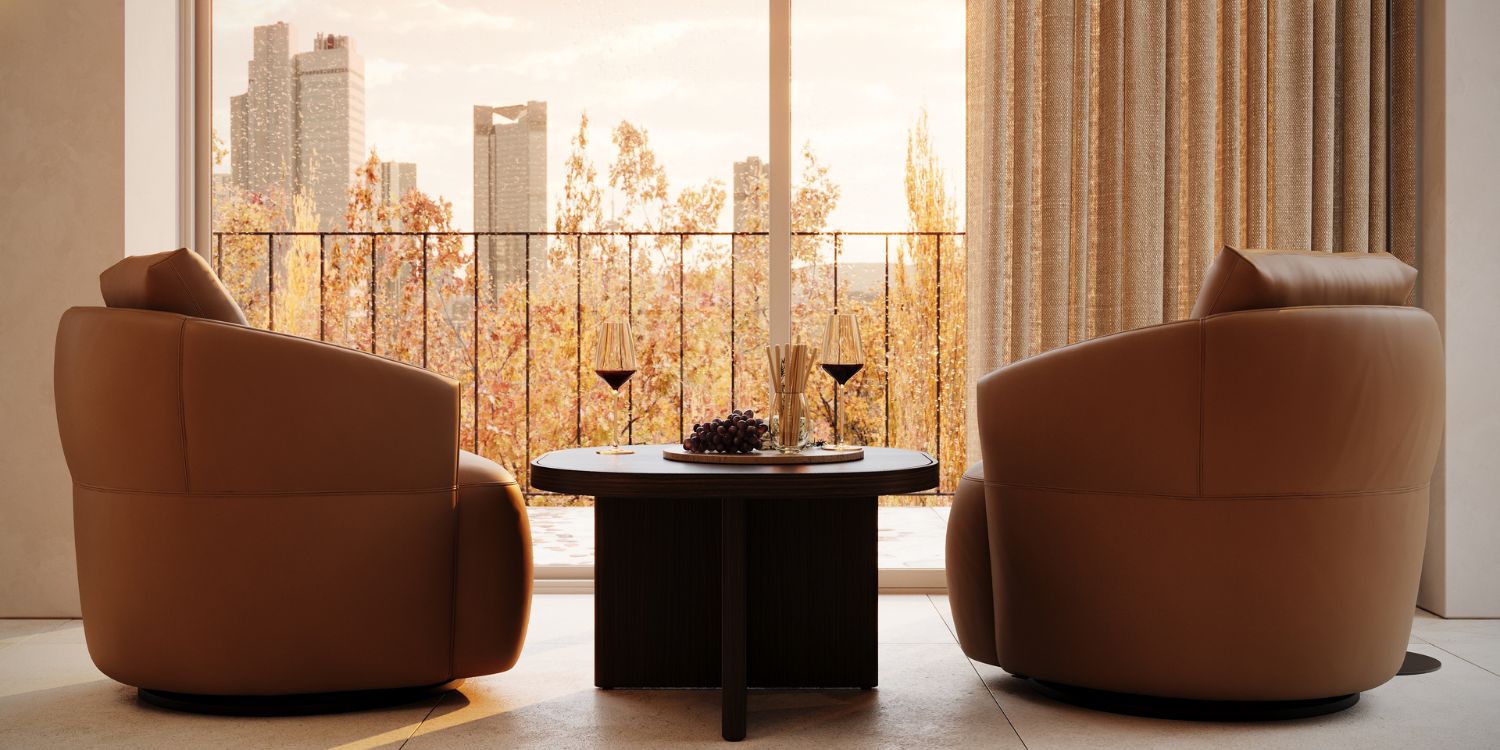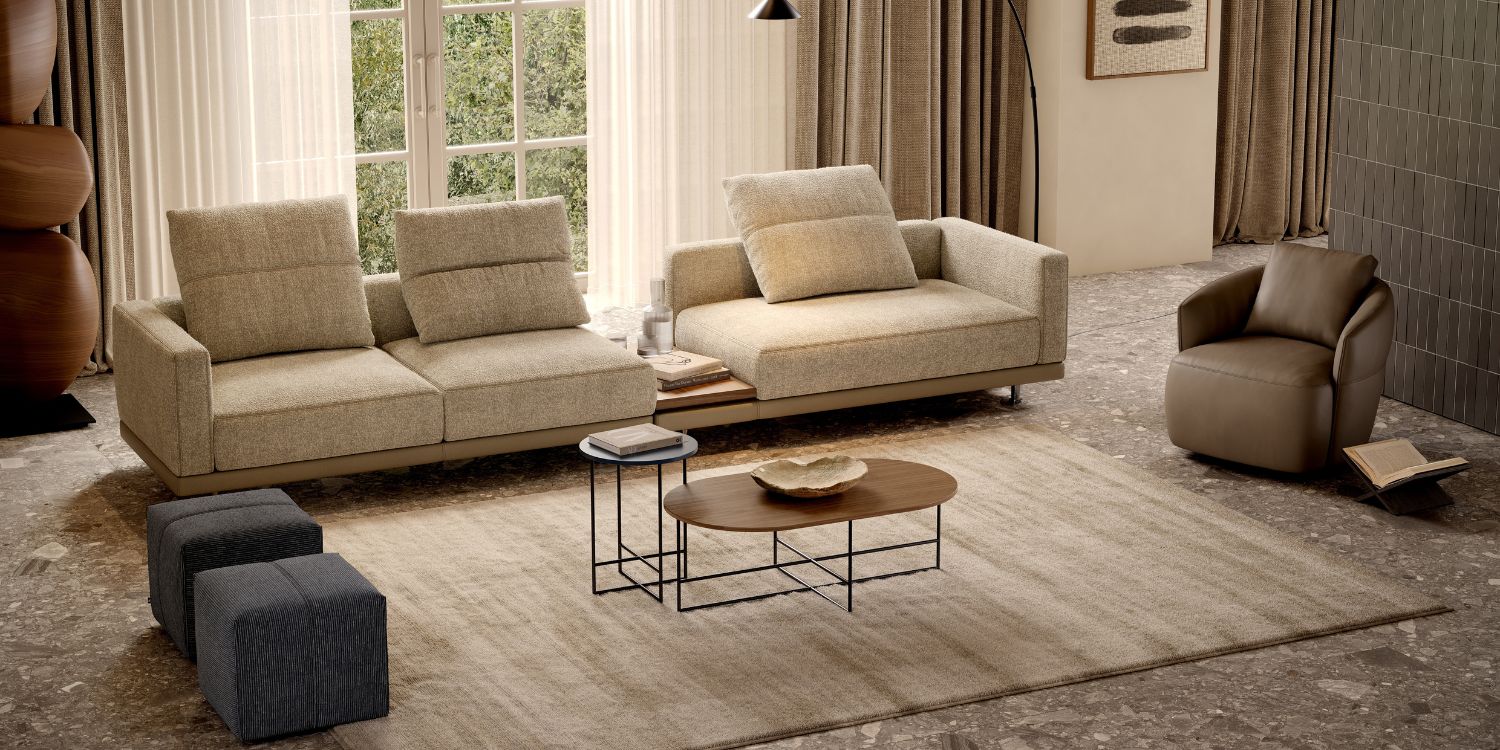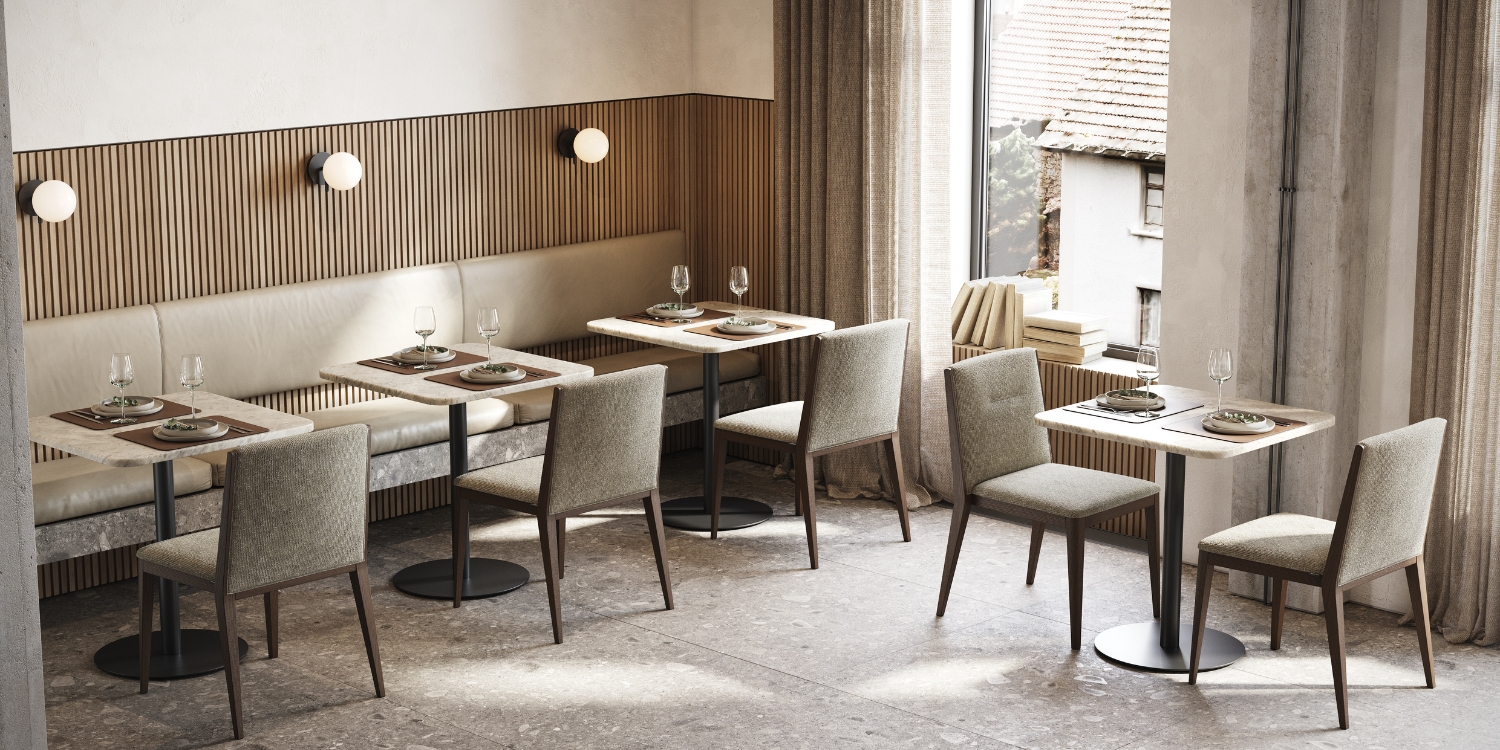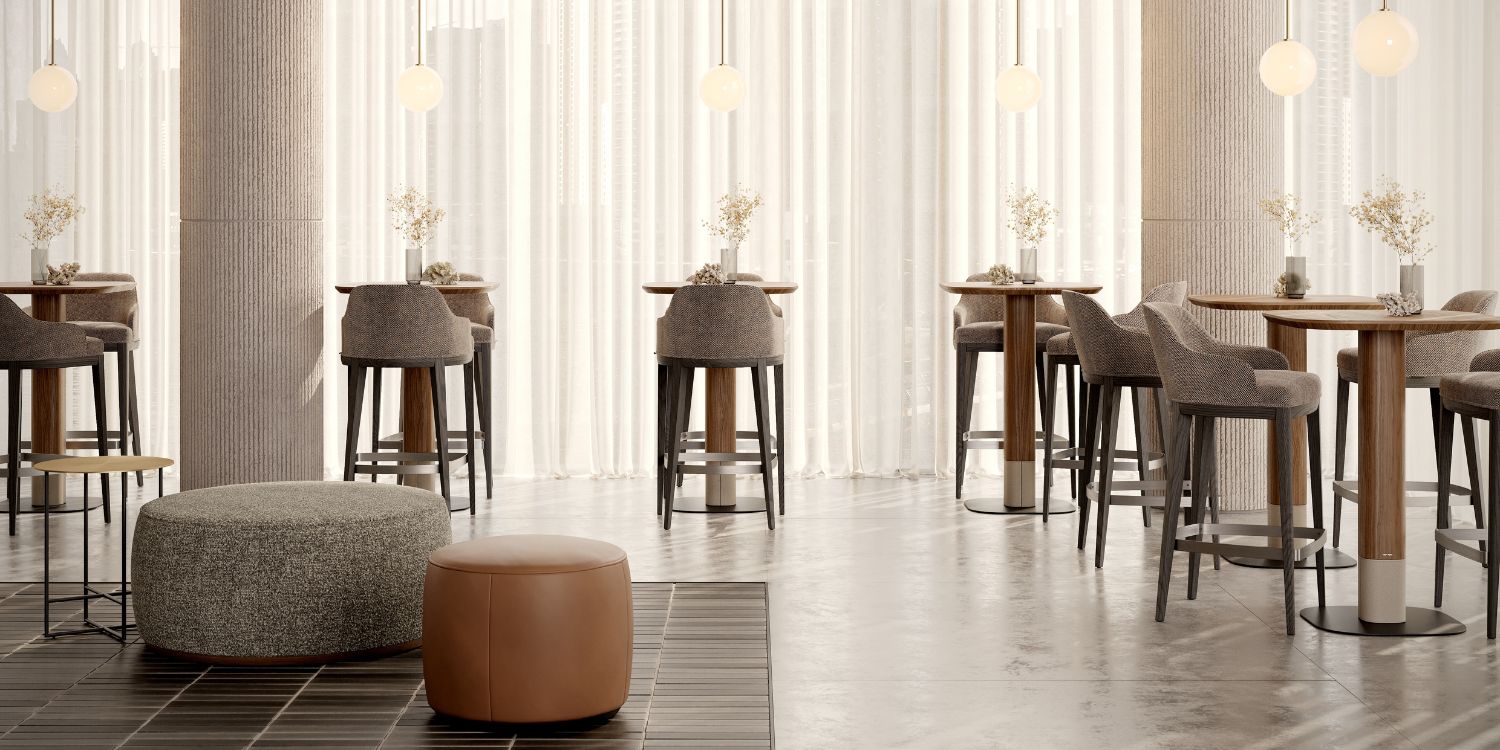In interior design, we often talk about flow: the rhythm between shapes, materials and proportions that turns a room into an experience. But long before modern design principles, there was Feng Shui – an ancient Chinese practice dedicated entirely to the art of flow.
At its heart, Feng Shui is about harmony between people and their environment, balancing energy (or Chi) to support wellbeing, prosperity and peace. And there’s perhaps no space where that harmony is more important than the bedroom.
Why? Because the bedroom is the most intimate space in any home – a place for rest, connection and renewal. Poor energy flow here can subtly affect everything from sleep quality to emotional balance. Therefore, for designers, understanding Feng Shui isn’t about mysticism; it’s about creating environments that feel intuitively right, where the client instantly feels at ease.
In this article, we’ll break down the most important Feng Shui rules for the bedroom and how to translate them into a designer’s language – proportions, materials and spatial logic – to create interiors that look beautiful and feel balanced.
1. The Commanding Position: Where Energy Meets Control
The bed placement is the cornerstone of a Feng Shui bedroom. The principle is simple: the bed should be in the “commanding position”, meaning you can see the door without being directly aligned with it.
This layout promotes a sense of safety and control – psychologically, it reduces subconscious stress because you’re aware of who enters the space, yet not directly in the line of energy flow from the doorway.
From a design standpoint, this principle aligns with spatial hierarchy: the bed is the focal point and its placement determines every other choice in the room.
Pro tip: If architectural constraints prevent an ideal position, use a mirror strategically placed so that the door is visible from the bed. This preserves the sense of awareness and control while maintaining visual harmony.
2. Symmetry and Balance
Balance is essential in Feng Shui because it represents harmony between Yin and Yang – the feminine and masculine energies.
Practically speaking, this means designing the bedroom with symmetrical balance around the bed: matching bedside tables, lighting or décor elements on each side.
It’s not about perfect mirroring but about visual equilibrium. The space should feel stable and cohesive, never dominated by one side.
Designer’s insight: If the architecture creates natural asymmetry (e.g., a window on one side of the bed), you can rebalance with visual weight – such as a tall plant, artwork or a sculptural lamp on the lighter side.
3. The Five Elements: A Palette of Energy
One of Feng Shui’s most useful frameworks for designers is the Five Elements Theory – wood, fire, earth, metal and water – each representing a type of energy and emotion.
Each element can be expressed through materials, colours, textures and forms. The goal is not to use all five equally but to find a natural equilibrium that supports the room’s purpose.
| Element | Energy | Design Translation | Best Used In Bedroom As |
|---|---|---|---|
| Wood | Growth, vitality | Natural finishes, plants, vertical shapes | Wooden headboards, furniture |
| Fire | Passion, warmth | Reds, triangular forms, lighting | Accent textiles, candles |
| Earth | Stability, grounding | Neutrals, ceramics, square forms | Rugs, stone lamps, décor |
| Metal | Clarity, precision | Whites, metallics, round forms | Mirror frames, lighting details |
| Water | Flow, wisdom | Blues, curves, reflective surfaces | Soft fabrics, artwork, accessories |
Pro tip: For bedrooms, Earth and Wood should dominate – they create a grounded, nurturing feel. Add Fire sparingly for intimacy and warmth.
4. Avoid Sharp Angles and “Poison Arrows”
In Feng Shui, sharp corners or pointed objects that aim toward the bed are known as “poison arrows” – they symbolise cutting energy that can disturb rest and harmony.
In contemporary interiors, this translates to softening geometry. Curved furniture, rounded edges and fluid lines promote calm and safety.
Design solution: If the room architecture includes sharp angles (e.g., a corner beam or wardrobe edge), use textiles or lighting to soften the effect – a floor lamp, a draped curtain or an upholstered bench can make a huge difference.
5. Declutter for Flow
No design philosophy values clarity of space as much as Feng Shui. Clutter blocks Chi, preventing energy from circulating freely – and that applies both visually and energetically.
Under the bed, in particular, storage is discouraged because it traps stagnant energy while you sleep. Encourage clients to keep this area clear or use drawers only for lightweight, soft items like bedding.
From a professional standpoint, minimal clutter enhances perceived spaciousness – a key principle in modern design.
Pro tip: Use integrated storage solutions – such as a bed with an upholstered base and hidden compartments – that maintain visual serenity while offering practicality.
6. Light and Air: The Breath of the Room
Lighting in Feng Shui isn’t just functional; it’s energetic. Natural light should be prioritised during the day, while layered, warm lighting should be used at night to mimic the body’s circadian rhythm.
Windows should open easily for fresh air circulation, symbolising renewal and vitality. For rooms lacking natural ventilation, air-purifying plants or high-quality air diffusers are effective design allies.
Designer’s insight: Opt for dimmable lighting systems and soft, indirect fixtures – wall lamps, pendants or concealed LED strips – to create mood flexibility and comfort.
7. Materials and Textures that Invite Calm
In Feng Shui, everything carries energy, even the tactile experience of a fabric or the sheen of a surface. For bedrooms, favour natural, breathable and soft materials.
Linen, cotton, wool and velvet bring warmth and grounding, while glossy or metallic finishes should be used with restraint to avoid overstimulation.
This is where interior designers can harmonise Feng Shui principles with aesthetic intent: layering tactile contrasts (e.g., matte wood with soft velvet) creates sensory and energetic balance.
Example: An upholstered bed with rounded edges and a neutral-tone headboard immediately establishes grounding energy. Pair it with organic cotton sheets and layered textures for depth.
8. Electronics and Mirrors: The Modern Dilemma
Technology, while essential, is energetically disruptive in Feng Shui. Screens emit active (Yang) energy that can interfere with rest.
Encourage clients to keep televisions, laptops and phones out of the bedroom or hidden within cabinetry.
Mirrors, too, require care. They reflect and amplify energy, which can be stimulating if placed incorrectly. Never position a mirror facing the bed, as it may cause restlessness.
Instead, place mirrors where they expand light without reflecting the sleeper, such as above a dresser or beside a window.
Feng Shui is a sensibility. For interior designers, it offers a timeless reminder that the spaces we create affect the energy of the people who inhabit them.
Applying these bedroom principles will:
-
Enhance clients’ sleep quality and emotional well-being.
-
Create interiors that feel right, even before they’re fully understood.
-
Add a layer of depth and storytelling to your design philosophy.
In a profession driven by intuition and detail, Feng Shui bridges the two, blending spatial awareness with emotional intelligence.
YOU MAY ALSO LIKE: The Essential Principles of Feng Shui
We are working every day to bring you the most stylish ideas to fulfil your inspiration and to create the best interior design projects, so feel free to follow our Instagram Page and subscribe to our newsletter.

